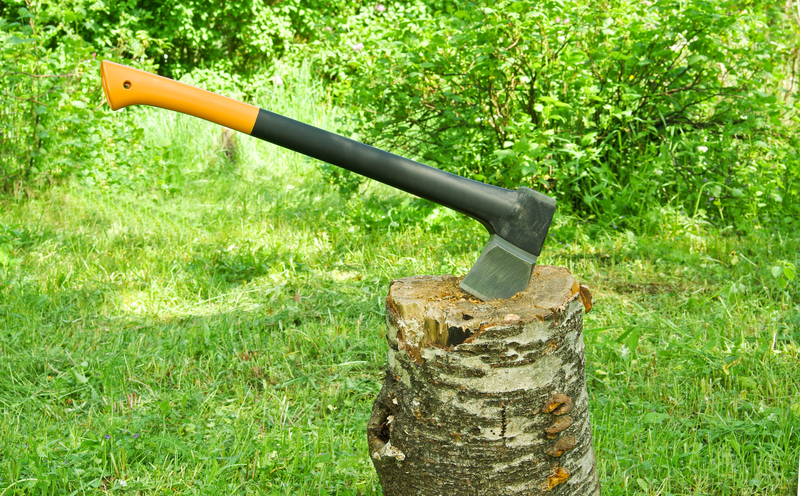There are several types of ax, and the many choices can get a bit confusing. Thankfully, we have an explanation of the most common types:
Types of axes: Pole Ax, Double Bitted Ax, Splitting maul, Hatchet
There are many different kinds of axes. Many have been either lost to time, or are very specialized and intended for one specific purpose. There are four general types of axes that are most commonly used and available at your local hardware store. These are: Pole Ax, Double Bitted Ax, Splitting maul, and the hatchet.
Pole Ax: The Pole Ax is the most common type of ax. It has one cutting edge and a flat blunt side opposite. The blunt end is commonly referred to either as the butt, or the Pole. Hence the name “Pole Ax.” The sharp end it used for chopping and cutting, whereas the blunt side is used for hammering things such as stakes or wedges.
Double Bitted Ax: The Double Bitted Ax is used for serious, heavy duty chopping. It was favored by loggers due to the fact that when one side became dulled they could simply switch to using the other side and keep on chopping. They would also use different grinds for each blade. One blade would be made razor sharp in order to expedite the cutting process. Whereas the other side would have a narrower grind and would be used for limbing trees and cutting through knots.
Splitting Maul: As the name suggests, the Splitting Maul is commonly used for splitting firewood. Though it’s excellent for splitting firewood, the Splitting Maul the good for little else. As with the Pole Ax, the Splitting Maul has one cutting edge and a blunt side that can be used as a sludge hammer or for pounding stakes.
Hatchet: The Hatchet is a shortened version of the pole ax. A hatchet usually has an overall length of around 16 inches. It’s commonly used for smaller tasks such and chopping kindling, limbing, chopping smaller trees, whittling, or dispatching animals such as chickens or geese. The hatchet is common on farms/ranches and is popular with outdoorsman such as Bushcrafters, hunters, and backpackers due to its small size, weight, and versatility.
Now that you know which type of ax you need, you also need to know how to properly, safely and efficiently chop wood:
How to Chop Wood: Chopping wood or cutting logs is only as difficult as you want to make it. Cutting through is much more about accuracy then it is about strength. Beginners tend to get frustrated and start swinging wildly and furiously. This is not just unproductive, but also dangerous. With each swing one should focus on accuracy. Practicing proper ax maintenance and keeping a sharp bald will go much farther then brut strength.
When chopping a fallen log it’s advisable to chop the log from the sides rather than then chopping from the top down. The reason being is that if you chop down from the top, when you cut through the log the blade may bury itself into the ground where it may become chipped or dented.
It’s also advisable that you chop at a 45 degree angle. Chopping at a more of an angle or straight on is much less effective. Chopping at an angle less than 45 degrees can be dangerous since it may skip off the log. logging101
The “cows’ mouth” refers to a notch that is chopped into a tree to fall it, or a log to cut it in two. The width of the cows mouth should be equal to the width of the log or tree. You can get away with a little less, especially if you are using a chainsaw or cross cut saw.
Chopping firewood: Chopping firewood is a relatively simple process. When it comes to firewood there should be more emphasis on choosing good quality wood over using brut force. The reason for wood not easily splitting usually has more to do with the wood than the person swinging the ax. For example, I have witnessed beginners trying to chop green and wet maple with great difficulty. The reason isn’t that their swing isn’t true or their ax is dull. Rather the issue is that green maple not only makes for poor firewood, but also is generally difficult to split.
“Green wood” is wood that comes from a recently fallen tree. Green wood is not just more difficult to chop, but also makes for poor firewood. One should look for fallen trees that have been down for some time, but are not rotten. The wood should be dry and cut with relative ease.
What kind of ax do you use for chopping wood? What are some of your favorite tips for chopping wood? Share your thoughts in the comment section below!
Article Source: Homesteading Guide

Travis Wescott
Albie McFarlane